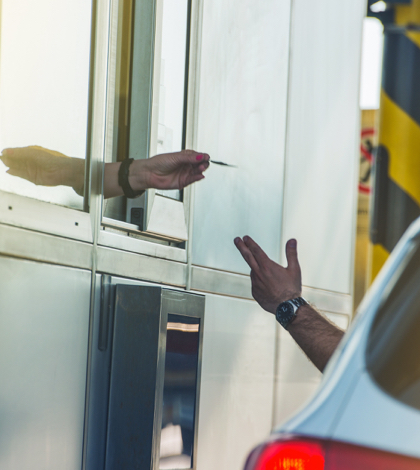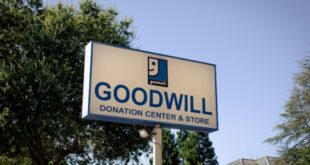SANBAG wants to build a pair of toll lanes from the Los Angeles County line to Redlands, then follow it up with an identical project on Interstate 15 that would reach the High Desert. Not everyone believes those are good ideas.
There’s a political battle brewing regarding a proposed pair of voluntary toll lanes that would traverse the west end of the Inland Empire along Interstate 10.
On one side sits the San Bernardino Associated Governments, an association of 24 local governments and the five-member San Bernardino County Board of Supervisors. SANBAG, as it’s commonly known, is the county’s regional transportation planning agency and the entity responsible for developing the project.
The other side includes some elected officials and at least one office seeker, all of whom raise various questions about the project, including what it will cost to build, how much it will cost people to use and whether it will reduce traffic.
Those detractors point out that, in 1989, San Bernardino County voters passed Measure I, a half-cent sales tax that raised money for transportation upgrades. Measure I was renewed in 2004 with an 80 percent vote.
So why, they ask, does the county need toll roads to generate transportation revenue?
“It’s a classic case of double taxation,” said Tressy Capps, who is running for a seat on on the Fontana City Council. “They already spent Measure I money to build [carpool] lanes, and now they want to make us pay up again with toll roads.”
SANBAG wants to construct two toll lanes along the interstate from the Los Angeles County line east to Interstate 15 in Ontario, a project that would be finished in 2022. After that, the agency wants to extend those lanes to Ford Street in Redlands, which will take another two to three years.
Cost of the 33-mile project, which SANBAG would develop in partnership with the California Department of Transportation, is expected to be around $1.8 billion, said Tim Watkins, SANBAG’s chief of legislative and public affairs.
On a typical day, those lanes would accommodate between 1,800 and 2,000 vehicles a day, Watkins said.
When the Interstate 10 project is finished, SANBAG wants to build another pair of voluntary toll lanes that would run from the Pomona Freeway-Interstate 15 interchange to Hesperia, a 32-mile project that is expected to cost another $1.3 billion.
Supporters of the Interstate 10 project, which was proposed earlier this year by the Southern California Association of Governments, say the toll lanes are needed primarily for two reasons: to alleviate traffic along the Interstate 10 Corridor, and raise money for future transportation projects.
“Toll lanes are a terrific way to raise revenue, and they’re also a great way to get traffic off the highway,” said Hasan Ikhrata, SCAG’s executive director and a co-author of the agency’s 2016-2040 Regional Transportation Plan.
Adopted last April, that plan identifies more than $500 billion in transportation needs in Southern California during the next 24 years, including construction of the proposed toll lanes on Interstate 10 in San Bernardino County.
SCAG’s board of directors adopted that plan in April. Shortly thereafter, SANBAG’s 29-member board of directors passes a resolution declaring toll lanes to be the “preferred alternative” for improving traffic flow along Interstate 10 in the Inland Empire.
That vote did not approve the project, but it did mean SANBAG was free to pursue it further. The agency is currently working on an environmental impact report, which must be approved by Caltrans before the project is put up for bid.
SANBAG officials hope to start construction in 2018, Watkins said.
Toll lanes, which are commonplace on the east coast but not as popular in the western United States, do have political support within the Inland Empire.
Some of the elected officials that either voted in favor or publicly shown support for the toll roads include: Rancho Cucamonga Mayor Dennis Michaels, Ontario Council Member Alan Wapner, Yucaipa Council Member Dick Riddell and Fontana Mayor Acquanetta Warren, as have Supervisors James Ramos and Robert Lovingood, said Capps, a longtime political activist.
But not everyone in the Inland Empire is anxious to install toll roads along Interstate 10, Fontana Council Member Michael Tahan said.
Tahan, a six-year council member and a member of SANBAG’s governing board, says he has voted against toll roads “eight or nine times” and that he has no intention of changing his mind for SANBAG’s Interstate 10 project.
“I’m very concerned about what this is going to cost,” Tahan said. “When you add the Interstate 15 project the price gets to about $2.5 billion, and they have to have Interstate 15 to make the whole thing work financially. They aren’t telling people that, but I work in construction, and that’s the truth. I know the business like the back of my hand.”
Tahan also questions the cost of using the Interstate 10 toll lane, which will be $7 to travel all 33 miles, or $14 round trip.
“That’s pretty expensive,” Tahan said. “If the goal is to reduce traffic, I don’t think that makes a lot of sense.”
Unlike carpool lanes, toll lanes do tend to cut traffic in heavily congested areas, said Baruch Feigenbaum, assistant director of transportation projects for the Reason Foundation, a non-profit, free-market think tank based in Los Angeles.
“It might surprise some people, but we don’t have a problem with voluntary toll lanes,” Feigenbaum said. “They offer a people a choice, and if someone is in a hurry to get somewhere on time, it’s nice to have something reliable like that.
“We don’t have a problem with Measure I, either, although I do think the county could have found better projects to spend that money on.”
Measure I, which will last through at least 2040, by itself doesn’t generate enough revenue to pay for the toll lanes, Watkins said.
“Toll lanes generate their own revenue, which means they can pay for their own maintenance,” Watkins said. “Also, because there’s a cost element, it makes it easier for us to regulate. We have some control over who will use it. A regular HOV lane will [deteriorate] in 10 years, but this will last a lot longer.”
Opposition to the proposed toll lanes isn’t limited to how much they’ll cost or how they’ll be paid for, Capps said.
“We have people in Adelanto deciding whether Fontana has to deal with a toll lane,” Capps said in reference to the SANBAG board. “That’s not how representative government is supposed to work. It’s like the United Nations.”
Capps, who is undertaking her third try for public office, is making the Interstate 10 toll lane proposal a centerpiece of her campaign, with a Facebook page and YouTube videos dedicated to the issue.
However, even though it’s early in the process, she’s getting a sense that it might not be possible to block the project legislatively.
“I’m thinking maybe the only way to stop this is with a lawsuit,” Capps said.
 IE Business Daily Business news for the Inland Empire.
IE Business Daily Business news for the Inland Empire.


